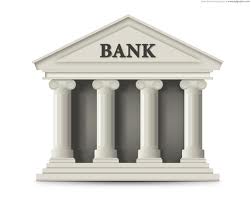| Life is good for banks. They get to play by their own rules. Not necessarily your friendly community bank, which must succeed or fail on its own merit. I'm talking about the big boys—the "Too Big to Fail" (TBTF) darlings that were bailed out during the | MARKET CONDITIONS financial crisis, and will undoubtedly be bailed out again in the next crisis. JPMorgan was too big to fail before the financial crisis. Then it gobbled up Bear Stearns and Washington Mutual. I'm not sure what that makes it now. WAY Too Big to Fail (WTBTF)? We seem to be moving in the wrong direction. Instead of shrinking these behemoths down to a manageable size, they continue to grow. That need not happen. As much as the powers that be would like you to believe otherwise, the existence of WTBTF banks is not an unfixable problem. |
| Doug French, today's guest contributor, is here to explain some others. Doug is an economic heavyweight; as former president of the Ludwig von Mises Institute, he oversaw the most prolific Austrian economics website in the world. He also studied under economic and libertarian legend Murray Rothbard and has written several economics books of his own. Perhaps most importantly, Doug is a former banker himself, so he understands exactly how banks operate. Doug is convinced that rising interest rates will spur the next financial crisis, and that it will come sooner than most expect. Read on for his analysis and recommendations on how to manage your own portfolio to protect yourself from the inevitable next financial crash. |
Expecting an improving economy, investors have piled into bank stocks the last two years. The PowerShares KBW Regional Banking ETF (KBWR) is up over 40 percent from the end of 2011.
Watching bank stocks surge, it's easy to forget the entire banking industry nearly went down the drain in 2008 and 2009. The Federal Reserve ponied up a total of $13 trillion in loans and guarantees to keep the bank business afloat. The Treasury Department also ladled out equity capital via TARP to preserve the industry.
"It was probably the most successful rescue of private enterprise ever conducted," writes Time magazine's Roger Altman.
But while regulators have patted themselves on the back for saving the industry and in turn the economy, the TARP program has been rife with fraud. Criminal charges have been filed against 144 individuals, mostly bank executives, for using the bailout funds for oceanside homes and private jets. The government has convicted 107 bankers, while 37 still await trial.
To the less than skeptical eye, bankers not caught up in the government's dragnet are achieving record profits. The industry earned $42.2 billion in the second quarter. Reportedly banks' balance sheets are clean, and US banks are the healthiest in the world.
Maybe so, but only because of favorable accounting rules.
Big Banks Hide Losses and Embellish Profits… Since the financial meltdown, banks haven't been lending much. The collective loan-to-deposit ratio for the nation's banks now hovers around 70 percent. Back in 2000, that ratio was 97 percent.
Instead of lending, banks are investing in long-term Treasuries. These government bonds are safer from a credit standpoint than loans to local businesses. However, investing short-term deposits in long-term assets is still risky.
Individual investors know that when interest rates rise, the value of the bonds they own declines, because the cash flow from the bond stays the same while purchasing the same stream of payments becomes cheaper. Indeed, during the second quarter, just a hundred-basis-point move in interest rates created a $51 billion decline in the banking industry's long-term assets.
But banks don't play by the same rules as you and I. "Under an accounting quirk, the $51 billion loss does not affect bank earnings but can reduce the book value of a bank," explains banking expert Bill Zielinski. "Unrealized losses on long-term bonds classified as 'available-for-sale' can be deferred and do not affect current earnings unless the securities are sold."
James Chessen, chief economist at the American Bankers Association, told American Banker, "When you have rates jumping by a hundred basis points, you have to expect the value of the portfolio to change and reverse those unrealized gains that you had, and it happened all at once. The magnitude and how quickly it changed I think was a surprise."
Interest rates have fallen for more than 30 years, so any increase in rates came as a surprise. However, a hundred-basis-point move in six months is far from unprecedented.
Bankers have also been padding their income by assuming all credit losses are behind them. Loan loss reserves fell by $6.4 billion to $149 billion in the second quarter. And that's nothing new—banks have been robbing their reserves to boost earnings since the aftermath of the financial crisis. At the end of the first quarter of 2010, the industry had $263 billion in loan loss reserves. Simple math tells us this accounting trick has added $114 billion to banks' bottom lines since 2010.
Big banks are also ramping up their exposure to derivatives, which were a catalyst for the financial meltdown. Investor Warren Buffett once called derivatives "financial weapons of mass destruction." As of June 30, the banking industry's derivatives exposure was $236.5 trillion. Ten short years ago that number was just $66.5 trillion. For the most part, this massive derivatives exposure does not appear on bank balance sheets. And while derivatives can diversify risk, they can also magnify risk in the same way leverage does.
While Everyone Else Is Left Holding the Bag
Small banks don't play much in the derivatives market. It's interest rates and regulations that worry them. When asked what his biggest challenge was, Douglas Manditch, chairman and CEO of the $455 million asset Empire National Bank told American Banker, "I'm concerned about interest rates climbing in an unmanageable way. If things get out of control with inflation and increasing rates, it could be very difficult on a lot of community banks because there's no way we can hide from that."
Manditch went on to say the regulatory burden is "becoming impossible," and is "never-ending." Empire spends 16 percent of revenues just on compliance. A lot is now expected of bank board members, according to Manditch. "It's to the point where you almost have to be a full-time banker to understand everything. It will be harder to get board members."
Despite the prospect of higher rates decimating bank balance sheets and sparking another financial meltdown, the Federal Reserve Board has raised its 2014 real growth forecast for GDP to 3-to-3.5%. Time's Altman agrees, writing, "the country will likely see two to three more years of good growth, which would produce millions of new jobs and begin to raise incomes."
The simple fact is interest rates are still near rock bottom, with nowhere to go but up. And while Wall Street and Washington are doing fine, the only thing growing on Main Street is dependence on government, with food stamp participation at an all-time high and unemployment still high.
The reckoning day for banks will come sooner than later. Higher rates will batter bank bond holdings and capital levels. The massive losses will set off another financial contagion that will cause government to ask taxpayers for a new round of bailouts.
The last Fed chairman, Alan Greenspan, left the Fed just in time in 2006. Ben Bernanke will do the same and be comfortably back at Princeton molding young minds when his crash unfolds. He's not worried one whit about individual investors.
How to Invest
Investors desperately seeking income have rushed into bond funds and ETFs in recent years. Total assets in junk bond funds soared from $100 billion in 2003 to $250 billion ten years later. In early May, the yield on Barclays US Corporate High Yield Index fell to a record low of less than 5%.
Since then, that rate has rocketed upward to 6.45%. That sounds much better than what your local bank is paying. Resist the siren's call. Stay out of bonds and especially bond funds. These rates will not compensate you for the beating higher rates will inflict on bond values.
Stay away from financial stocks, too. Like bonds, they've had a great run. But now it's time to walk away and watch from the sidelines.
Finally, the lesson from the '08 crash is that all assets declined together. The next crash will likely bring the same pain, and losses will be unavoidable. But remember: it was gold that dropped the least and bounced back the fastest in 2008/'09.


 RSS Feed
RSS Feed
